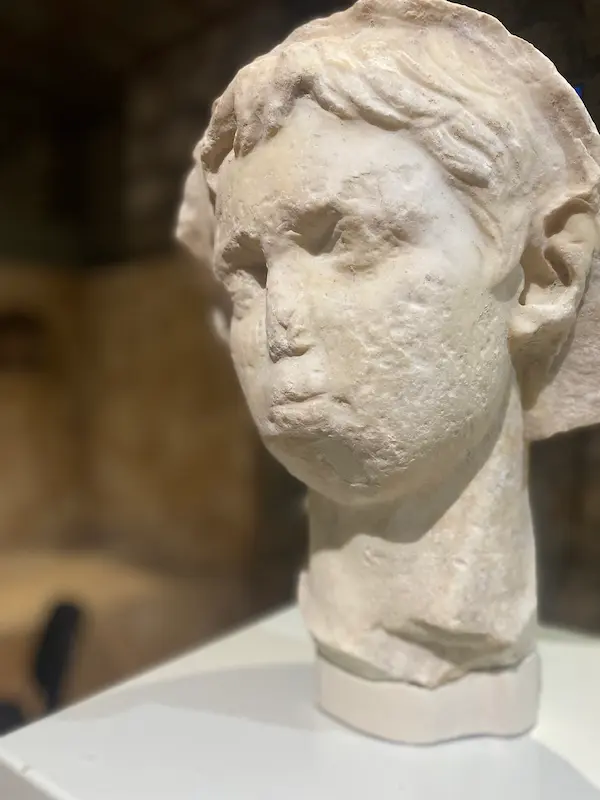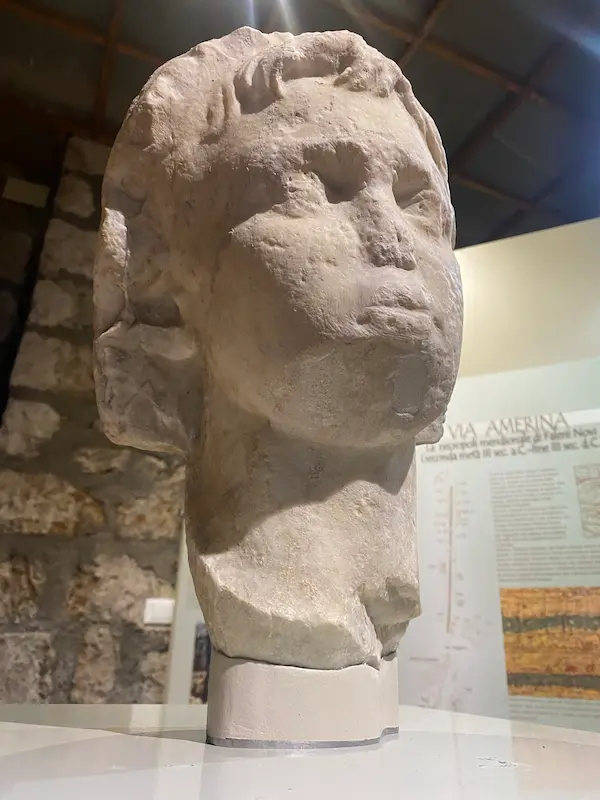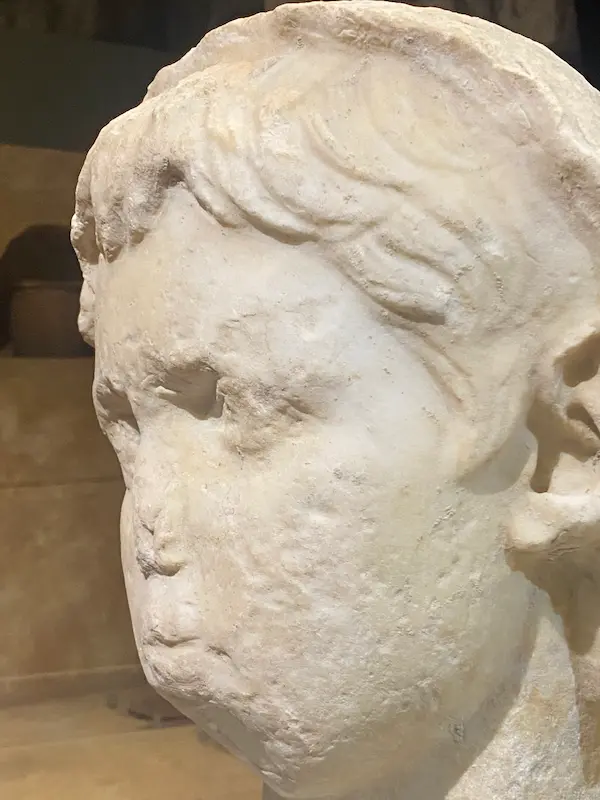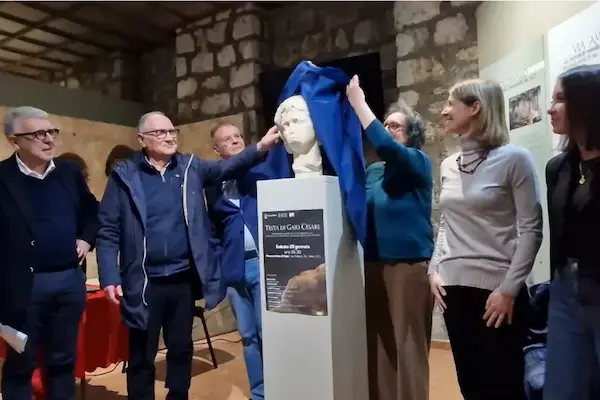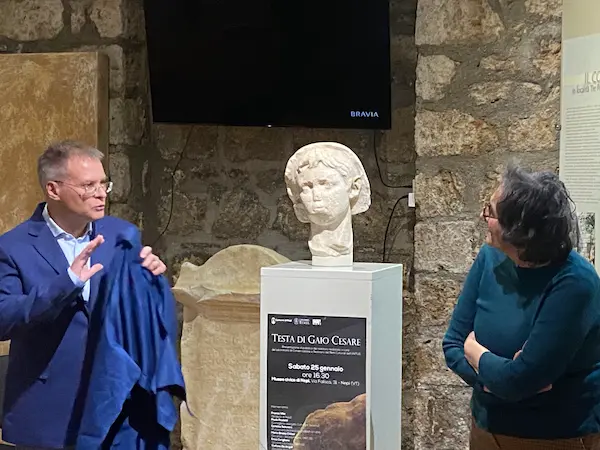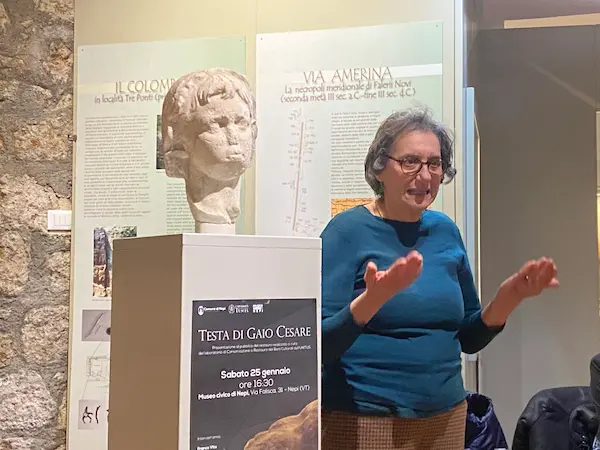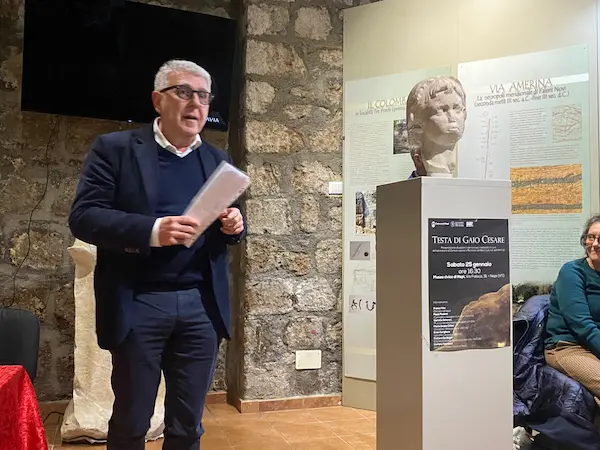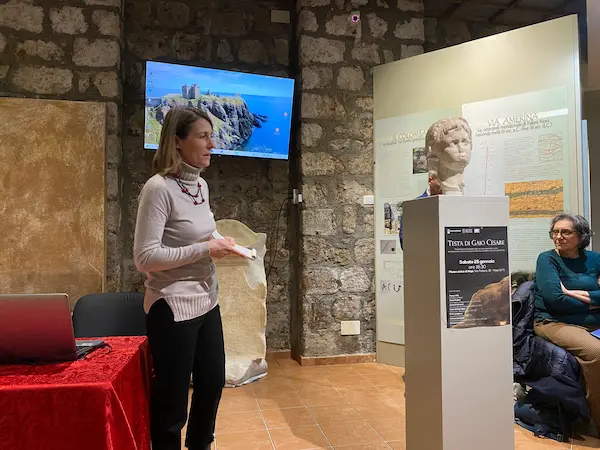On Saturday, January 25, at 4:30 PM, an important Roman-era marble head depicting a prince of the Julio-Claudian family will be presented to the public at the Civic Museum.
The sculpture portrays a young boy with a veiled head, appearing to be around 13-14 years old, who can hypothetically be identified as Gaius Caesar, son of Agrippa and later adopted by Augustus.
Although the exact time and place of the head’s discovery are unknown, its provenance from Nepi, the ancient Nepet, is certain. The sculpture may possibly be linked to the one depicting Augustus, which was stolen in the 1970s and returned to Nepi in 2016.
The two sculptures were certainly already present at the beginning of the 20th century under the portico of the Town Hall, placed above two unrelated toga-clad statues.
At an unknown date, the head of Gaius Caesar was embedded in the palace wall, where it remained until the 1980s, when it became part of the collection of the first municipal Antiquarium, organized by the local section of the Archeoclub. The artifact was later incorporated into the collection of the Civic Museum, which opened to the public in 1995.
Due to its poor state of preservation, the head remained in the museum’s storage for many years until 2019, when, following an agreement between the Municipality of Nepi and the DIBAF of the University of Tuscia, it was transported to Viterbo along with other marble artifacts from the civic collection to undergo restoration in the university laboratory.
Over the centuries, the sculpture had suffered various damages. The marble surface showed holes, scratches, abrasions, and encrustations. Through a meticulous and delicate restoration process, the head was returned, as much as possible, to its original splendor.
Thanks to funding from the Lazio Region (Museums Plan 2021) and a final recent intervention that allowed the lower part of the sculpture to be adapted to its display base, the artwork will finally be visible to the public once again.
The museum exhibition will thus be enriched by a highly significant artifact, whose presence in Nepi is linked to the cult dedicated to Augustus.
Gaius Caesar was adopted by Augustus, along with his brother Lucius Caesar, in 17 BC. Since Augustus had no male heirs, the two young men were meant to ensure his succession. However, both died prematurely, at the ages of 23 and 18. Glorified during their lifetime, they were celebrated across the empire after their deaths as heroes, with public buildings, sculptures, and monuments erected in their honor.
The basilica complex in Corinth has yielded statues of Augustus, Gaius, and Lucius Caesar, as well as other members of the Julio-Claudian dynasty. This discovery provides a clear example of how public spaces and buildings in Roman cities were intended to house images of imperial family members as a sign of loyalty. Similar displays must have characterized smaller provincial towns as well, albeit on a lesser scale. In the region of southern Etruria, the most significant example remains Lucus Feroniae, where, in addition to an inscription mentioning the templum Divo Augusto, the structure of the building and an important group of statues have been partially preserved.
The discovery in Nepi of the two heads, along with various inscriptions mentioning the Augustales—officials responsible for the cult of Augustus—suggests the existence of a dedicated space in ancient Nepet, possibly an Augusteum, intended to host imperial worship.
Speakers:
Franco Vita (Mayor of Nepi)
Paolo Paoletti (Councilor for Cultur and Tourism)
Carlotta Schwarz (Archaeologist, SABAP – VT- EM)
Maria Grazia Chilosi (Professor – Restorer, UNITUS)
Erica Corigliano (Recent Graduate, UNITUS)
Stefano De Angeli (Professor of Greco-Roman Archaelogy, UNITUS)
Stefano Francocci (Director of Civic Museum of Nepi)
Free admission.
For more information visit the website of the Civic Museum of Nepi

